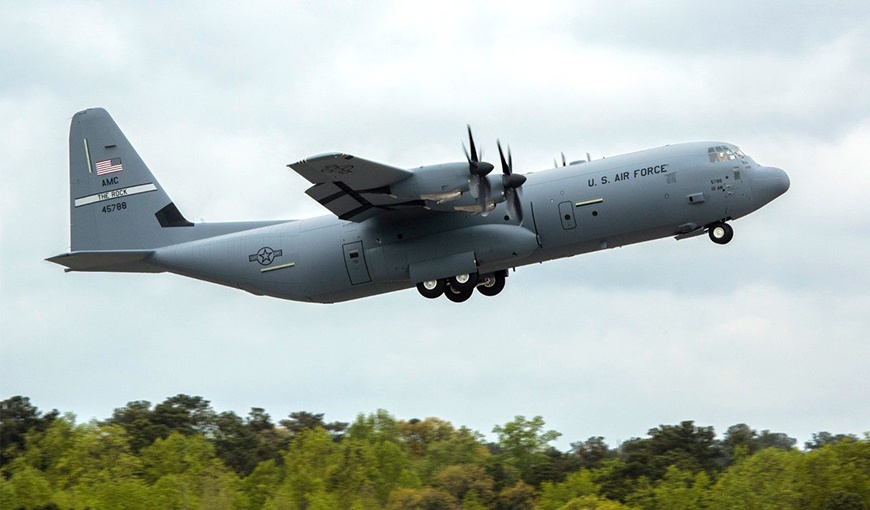PhD Candidate Develops Novel Method for Assessing Impact of Climate Change on Aircraft Performance

The C-130J is one of the planes that McRae studied in her research on the effects of climate change on military aircraft.
As a retired Air Force officer and the first PhD candidate in Villanova University’s Sustainable Engineering program, Mary McRae ’86 EE, ’13 MSSE, ’19 PhD, decided for her dissertation to develop a tool to help the Department of Defense make sustainable decisions. To test her model, she needed to select a technology that was directly affected by climate change. Initial inquiries led her to the impact of high temperatures on aircraft performance, a topic she was surprised to learn had seen very little research. As she investigated further, she concluded that, in combination, dew point and temperature combined played an even more significant role. In “A Risk-based Approach to Planning Aircraft Acquisitions in a Warming Climate,” Dr. McRae has analyzed climate change data in a way that will help the DoD make smarter decisions on everything from mission planning to aircraft acquisitions and performance requirements by determining which assets are most vulnerable to the effects of global warming.
Experts agree that air temperature and dew point are projected to rise due to anthropogenic climate change. Both of these variables are key factors that will cause an increase in density altitude (DA). High DA corresponds to reduced air density and thus reduced aircraft performance. Operational impacts include reduction in power because the engine takes in less air, reduction in thrust because a propeller is less efficient in thin air, and reduction in lift because thin air exerts less force on the airfoils. Dr. McRae has found that Global Climate Model projections of maximum and minimum air temperatures can be utilized to quantify these increases into risk probability of occurrence at individual base locations around the world. She says, “Translating increased temperature and dew point into DA thresholds is a fundamental way to bridge climate data and aircraft performance and create a hybrid approach to decision-making.”
Integrating dew point into DA threshold calculations will become increasingly important as these values are projected to rise in a warming climate. Dr. McRae stresses, “The consequences of high DA can be catastrophic to aircraft performance. Therefore, assessing the full spectrum of potential DA impacts to include dew point is critical.”
Incorporating her sustainable engineering background, Dr. McRae notes that STEEP factors (social, technological, environmental, economic and political) enable a holistic assessment and provide a decision-making tool that can address various stakeholder perspectives. Translating these sustainability factors to DA thresholds takes an often unquantifiable issue and enables a quantifiable assessment and comparison.
Dr. McRae says, “By assessing projected aircraft performance impacts now, the DoD can take proactive steps in the aircraft acquisition process.” These steps include identifying changing mission requirements and defining aircraft performance criteria that will best meet these changing requirements. Furthermore, identifying potential future aircraft performance impacts from increased DA will enable discussions with industry and encourage these challenges to be met sooner than later with the most efficient process and lowest price.
Dr. McRae’s research has already caught the DoD’s attention. In October 2018, she was invited to present her research to the Air Force’s monthly climate working group meeting. Positive feedback resulted in a follow-up invitation to present at the Strategic Environmental Research and Development Program’s (SERDP) annual symposium “Enhancing DoD’s Mission Effectiveness” in Washington, D.C. in November. That presentation led to a request for Dr. McRae to participate in a DoD SERDP workshop on “Resilient Aviation Infrastructure” in April 2019 at NASA headquarters.
Dr. McRae notes that the next phase of this effort will include the contributions of computer scientists and engineers. “We’ll be working toward automation of this proposed vulnerability assessment model to enable multiple installations and aircraft specifics to be analyzed in a timely and accurate manner.” She adds, “Increased development of the STEEP criteria based on extensive user feedback will ensure the assessment criteria meets the needs of tomorrow’s warfighter.”
